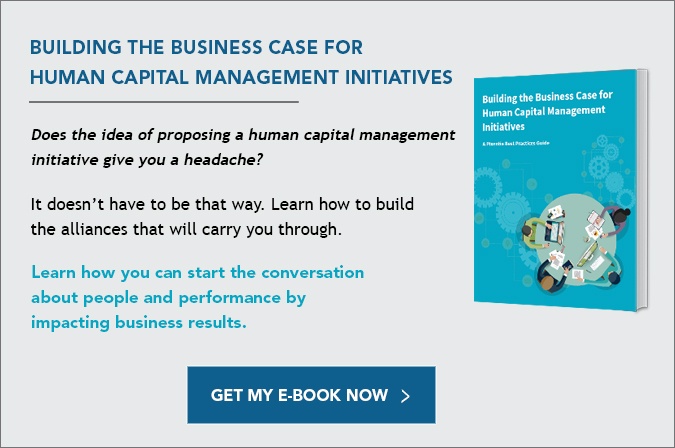
We have been thinking about competency models a lot lately – mostly about how the right competency model, used correctly, can have a significant impact on a company’s performance.
Talent tops the concerns of business leaders worldwide. Companies are feeling the pinch of a shortage of skilled labor, and the half-life of skills is diminishing as the pace of technology change speeds up. Recruiters are facing more difficulty in finding candidates with the right skills. As the market tightens, turnover increases. Companies are trying to create more development opportunities to boost retention, but those programs take time to have an impact.
Harness The Power of Competencies
One of the most powerful tools in the war for talent is a well-designed competency model. That power has grown during the past decade as we have learned more about human behavior in the workplace and how the workplace affects people. We have learned how to measure talent management activities to show their effectiveness and the effectiveness of other talent management efforts.
What is a well-designed competency model? It might sound glib to say the right one for your business, but that is true. Certain models can span across industries, such as leadership, communication, and other common competencies, but ultimately, they must meet the needs of your unique business.
A good competency model will:
- be aligned with your corporate strategy and culture.
- encourage values, attitudes, and behaviors that achieve your purpose and goals.
- contain clear, unambiguous language that every employee can understand.
- describe specific behaviors as benchmarks for behavior and performance; and
- be embedded in every talent management function.
The last point is the key to integrated talent management. Your competency model tells people at every level how to maximize the value of talent in themselves, their teams, and the people they develop.
Each talent management activity informs other functions using the model as a framework, and data from each function helps improve others. We have provided here a few thoughts on how competencies can be the glue that holds talent management together.
Recruiting
Individual skills matter little if the employee does not fit with the organization and work team. Without competency models, recruiting focuses solely on a skill match. Competencies refocus recruiting on cultural fit and behavioral attributes required for the role. An executive in a high-tech manufacturing firm told us he struggled for years hiring scientists until he learned that he could teach skills to people who fit well into the organization and did not need to find exact skills.
Recruiting can be the gatekeeper for maintaining the competency models. When the recruiter and hiring manager find a mismatch between the role and the competencies, make it easy for them to trigger a review
 Onboarding
Onboarding
Communicating clear expectations is essential to successful onboarding, and a competency map helps the manager, work team, and L&D to enable rapid development to full productivity.
Feedback captured during onboarding can help Recruiting improve the candidate experience.
Performance
A competency definition and behavioral anchors create unambiguous performance expectations and the standards for evaluating them.
Analyzing and assessing performance informs Recruiting of the effectiveness of their methods, and feedback can improve candidate assessments.
Identifying skill gaps according to the competency model tells L&D what learning needs to address. Performance analysis can help measure the effectiveness of learning programs.
Learning and Development
Learning activities mapped to competencies help define learning paths for development, both for current role and future roles. Learning assessments help measure readiness for future roles.
Succession Management
One of the most powerful ways to align your people to your strategy and culture is to develop a succession management plan that reaches deep into the organization. Presenting a visualization of a future path is one of the most effective ways to improve employee retention.
Critical roles can exist on any level. If your business model is based on superior personal service, the people who provide that service are essential. If it relies on merchandise price, buyers are.
No one should be indispensable, and any person can be lost to the organization at any time. Whenever there is a successor gap in a critical role, your succession application should notify Recruiting of the need.
Competency Modeling is an Ongoing Activity
In many organizations, competency modeling is a huge effort to develop or purchase a new competency library and manage its adoption. Then, too often, it is neglected until the next round. We advocate a steady, ongoing approach. Start with a small part of the organization and work your way through over time.
Plan ongoing reviews to keep your competency models in line with your organization, then take a measured approach to making a change. The model should adapt over time to business and cultural changes but should not be a source of upheaval.
We mentioned a review when a manager and recruiter get together to plan a hire. You can also trigger reviews as changes occur. For example, Bersin researchers recently learned that the most important predictor of quality of hire is the relationship between the recruiter and the hiring manager. Have you validated that and added it to your recruiter competencies?
Build on a Strong Foundation
You may find that licensing a competency model from a top provider like DDI or Korn-Ferry will serve you well. Hiring a consultant may be the approach you prefer but be aware that consultant-speak can make competency descriptions incomprehensible, so check references. If you have the expertise and resources to build your own competency models, all the better. You may need a combination of all three approaches.
Whichever method you choose, build your competency house on a strong foundation. The future of your workforce depends on it.
PhenomᵉCloud is a comprehensive technology solutions provider committed to empowering businesses to overcome challenges, enhance their workforce capabilities, and achieve superior outcomes.


Leave a Comment